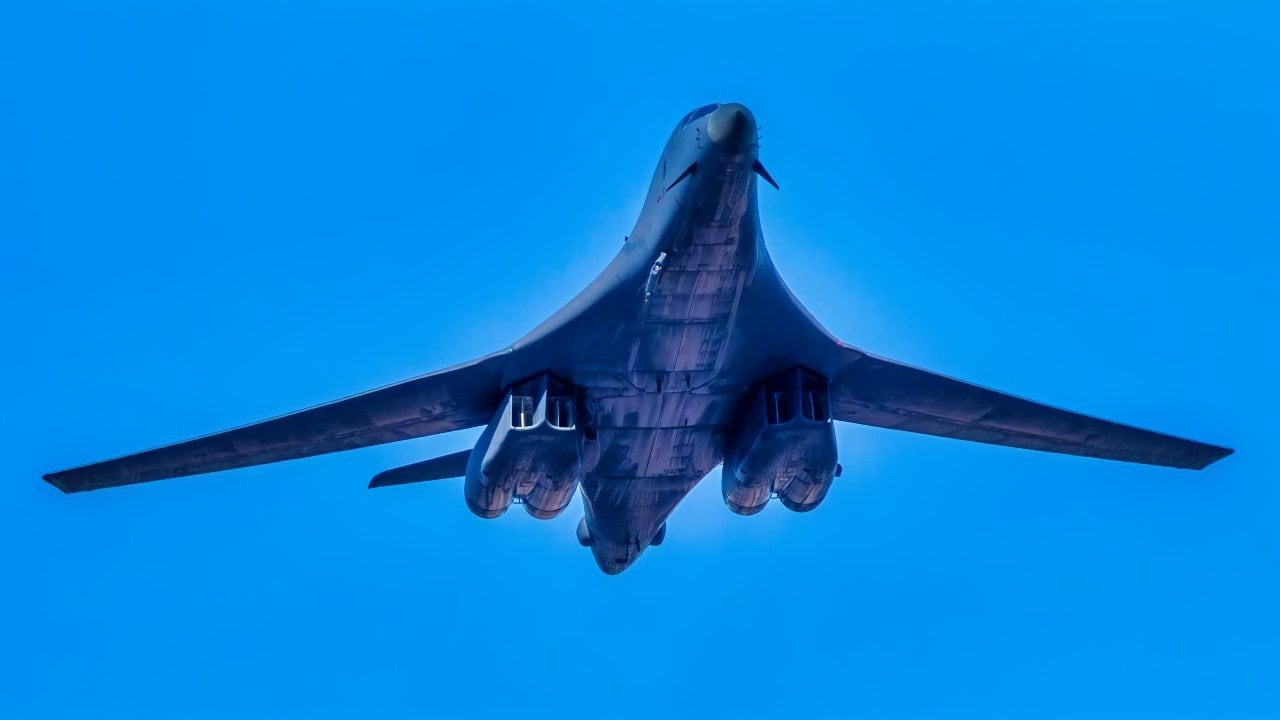The B-1B Lancer Bomber Only Has 1 Real Enemy Now (Not Russia)

Summary and Key Points: Only Father Time can beat the B-1 bomber. In May, B-1 Lancers from the 28th Bomb Wing arrived at Andersen AFB, Guam, for a Bomber Task Force deployment, integrating and training with allies and regional partners. Now back at Ellsworth AFB, South Dakota, the 37th Expeditionary Bomb Squadron completed the Bomber Task Force 24-6.
-The deployment, part of ongoing efforts since 2020, underscores the U.S. commitment to Indo-Pacific security. During the Valiant Shield 24 exercise, B-1B Lancers conducted live munitions training with RoKAF F-15Ks, marking the first such drop in Korea since 2017.
-The B-1 Lancers continue to serve as a key deterrent, showcasing their strategic capabilities in contested environments.

B-1 Lancers Showcase Power in Valiant Shield 24 Exercise
In May, B-1 Lancers from the 28th Bomb Wing arrived at Andersen Air Force Base (AFB), Guam, as part of a United States Air Force Bomber Task Force deployment. During the "routine" deployment, members of the 37th Expeditionary Bomb Squadron were able to integrate and train with various Allies, regional partners, and the Joint Force.
Now, the B-1 Lancers and the airmen of the 37th Expeditionary Bomb Squadron are back home – arriving at Ellsworth AFB, South Dakota last week following the completion of the recent Bomber Task Force 24-6. Such deployments have been ongoing since 2020 to help ensure security and stability in the Indo-Pacific Region.
"The presence of B-1s, long-range strategic bombers, is a crucial demonstration of our commitment to the U.S. National Defense Strategy," said Lt. Col. Christian Hoover, 37th Expeditionary Bomb Squadron commander. "Training and operating in highly contested environments enable superior tactics, techniques, and procedures for our Joint and Combined Forces. We are confident in our ability to quickly deploy anytime, anywhere, conducting integrated deterrence to dissuade and defeat aggression."
During the recent deployment to the Indo-Pacific, the B-1B Lancers took part in training sorties during the Valiant Shield 24 biennial exercise, operating with Republic of Korea Air Force (RoKAF) F-15Ks. During the drills, the long-range strategic bombers conducted live munitions training with GBU-38, 500-pound joint direct attack munitions, simultaneously striking multiple simulated targets at the Pilsung Range in South Korea.
According to the Pacific Air Force, it was the first time the B-1 had conducted a live munitions drop in Korea since 2017. The training flight and live munition drop were aimed at deterring North Korean aggression and reaffirming the capabilities of the venerable bomber.
"This training showcases the incredible capabilities of our combined forces to simultaneously strike multiple targets in a contested environment," said Lt. Gen. David Iverson, U.S. Force Korea deputy commander and Seventh Air Force commander.
The Old BONE Keeps Flying
While a total of 104 Rockwell B-1s were produced, fewer than 50 remain in service, and they continue to be deployed around the globe.
The swing-wing bomber was developed to conduct high-speed, low-altitude penetration missions back when the Boeing B-52 Stratofortress was the king of the skies and conducted combat operations over the jungles of Vietnam. The Lancer – known as the "Bone" as its designation was "B-One" – took its first flight in December 1974.
At the time, it was a major leap forward in aviation design, and while smaller than the Stratofortress, its advanced engines and high-lift, variable-sweep wing allowed it to carry twice the weapon load at a much greater distance and higher speed.

The B-1 was originally designed for nuclear capabilities; however, it was switched exclusively to a conventional combat role in the mid-1990s under the Conventional Mission Upgrade Program (CMUP). That was brought on by the collapse of the Soviet Union and the end of the Cold War – and President George H.W. Bush ordered a $3 billion refit, which included the removal of nuclear arming and fusing hardware – while provision under the New START treaty additional modifications were further made to prevent nuclear weapon pylons from being attached to the aircraft. The conversion process was completed by 2011, and Russian officials were even allowed to inspect the aircraft yearly to verify compliance.
As a conventional bomber, the old Bone continues to serve as a deterrent in BTF deployments around the world.
Author Experience and Expertise: Peter Suciu
Peter Suciu is a Michigan-based writer. He has contributed to more than four dozen magazines, newspapers, and websites with over 3,200 published pieces over a twenty-year career in journalism. He regularly writes about military hardware, firearms history, cybersecurity, politics, and international affairs. Peter is also a Contributing Writer for Forbes and Clearance Jobs. You can follow him on Twitter: @PeterSuciu. You can email the author: Editor@nationalinterest.org.
All images are Creative Commons or Shutterstock.
